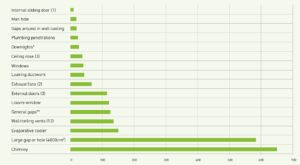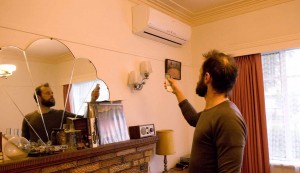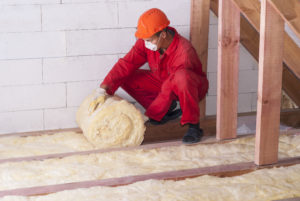Small Projects
draught proofing
Unlike installing cool technology such as solar panels and batteries, draught proofing simply means filling up all the holes and gaps where the good air in your home escapes. Sexy, no? Important? Very. If you’ve heated up the air in your home, you don’t want that air leaking out under the door. It means you’ve spent money heating air for little gain.
This graph shows potential air leakage points in a home, listing them from least to most severe. The bigger the hole or gap, the more air leakage through that point. So, it’s best to start with filling the biggest gaps in your home.
Source: Sustainability Victoria 2018, Energy Smart Housing Manual.
1. Fill in your chimney with a temporary balloon
If you live in an older home with a chimney, these large, open cavities unsurprisingly leak lots of air out of your home. You can fill this yourself with a chimney balloon.
Check to see if there is already a damper or other device in your chimney. This advice does not extend to gas appliances.
2. Install a DraftStoppa device above your extraction fan for $25-35
Like chimneys, these are large gaps to the outside world where air escapes. That’s their purpose when in use, but when they’re idle, they leak. Install a DraftStoppa device for $25-35. Watch this informative video.
3. If you’ve got an evaporative cooler, fill in the vents during winter
In the winter months when these are not in use, they simply leak warm air outside. For $30, you can install a HeatSaver in five minutes to block these gaps in the cooler months. See this handy video.
4. Seal the gaps around your doors and windows quickly and cheaply with adhesive tape or caulking
Doors and windows, especially those to the outside, can be significant draught trouble spots. Cheap materials like adhesive tape and rubber or plastic caulking can be installed in minutes for less than $10. Here’s a video explaining how.
Appliances
Appliances, especially those used to heat or cool space, are often one of the most significant energy expenses in a household. Short of purchasing super-efficient new appliances, here’s what you can do with what you’ve got.
5. Set your heater to 18-20 degrees
Every extra degree can add approximately 10% to the winter running cost of your heater. Coupled with warm clothing or a snug blanket, this temperature range will keep you comfortable with much less energy use than if you set your thermostat to higher temperatures.
6. Turn electronics off at the power point
Leaving all or your appliances on standby, such as TVs, computers, clocks or anything with an electrical display, all adds up. Turn these off at the plug when not in use. The difference is small but noticeable.
Windows
Windows are one of the most vulnerable points in our homes for heat loss and gain. In fact, a wall with zero insulation is far better in terms of retaining heat/cool air than a window. That’s why it’s important we treat windows properly.
7. Hang makeshift, heavy curtains in front of your window, such as an old blanket
Heavy curtains can significantly reduce the heat the loss/gain of windows. Makeshift curtains from hanging a blanket over the window can make a difference.
8. Double glaze your windows for free using bubble wrap and water, or ClearFilm
Have you got spare bubble wrap lying around? Spray a small amount of water and stick the bubble side to the glass. It’s the same outcome as double glazing at no cost! Alternatively, install a clear, plastic film, called Clear Film, which has the same effect as double glazing for about $30. Here’s another handy video explainer.
9. Choose the right power company
If you’ve been with the same provider for a long time, you could be missing out on new deals or better rates. Visit the Green Electricity Guide to see if you can get a better deal (but also think about whether you want your energy bills to be adding to the profits of companies than run coal power stations!).



